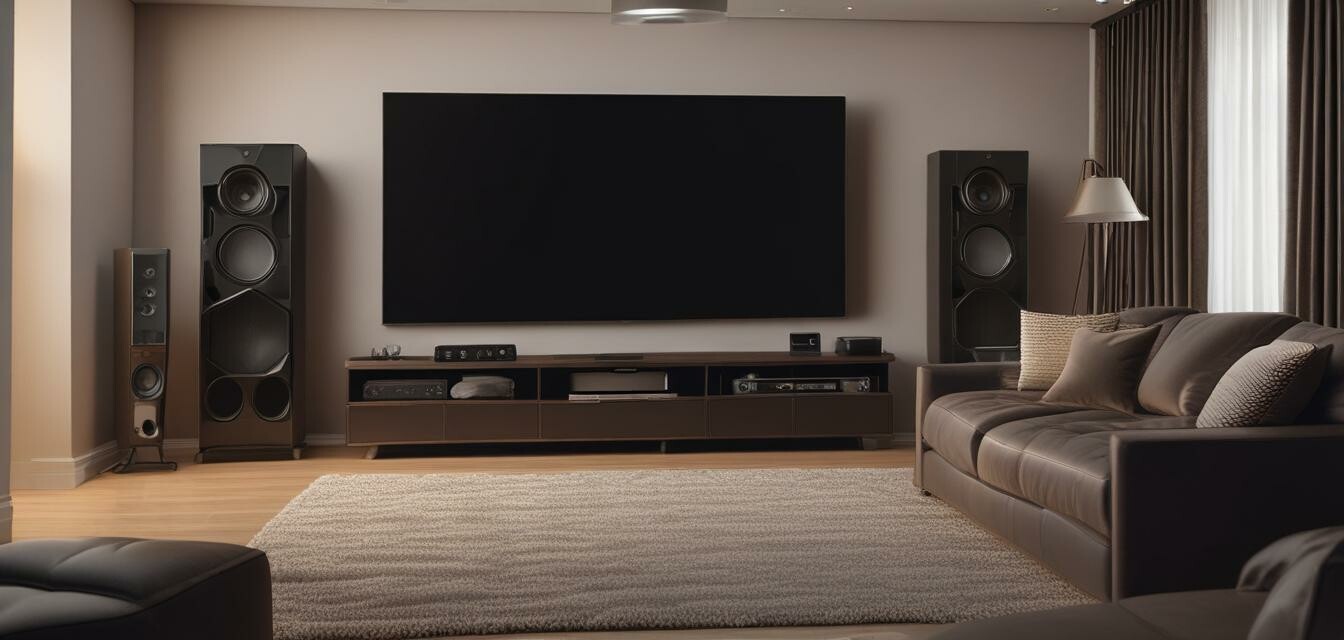
Optimizing Your Home Theater for Streaming Services
Key Takeaways
- Ensure high-speed internet for smooth streaming.
- Use quality audio equipment for an immersive experience.
- Optimize your home theater layout for viewing comfort.
- Invest in smart home integration for ease of use.
- Acoustic treatments can enhance sound quality significantly.
In the age of digital media consumption, streaming services like Netflix, Hulu, and Amazon Prime have become the go-to for entertainment. However, to truly enjoy your favorite shows and movies, you need a home theater setup that can deliver the best possible experience. This article will guide you through effective strategies to optimize your home theater for streaming services, ensuring you get the most out of your setup.
Why optimizing for streaming is essential
Streaming services have become an integral part of our entertainment landscape, offering a plethora of content. However, not all home theaters are equipped to provide a seamless streaming experience. Various factors such as internet speed, equipment quality, and layout can significantly affect your viewing experience.
Assess your internet speed
Before diving into equipment upgrades, check your internet speed. A slow connection can lead to buffering and lower quality visuals. Here’s a quick breakdown of recommended speeds for streaming:
| Streaming Quality | Recommended Speed |
|---|---|
| Standard Definition (SD) | 3-4 Mbps |
| High Definition (HD) | 5-8 Mbps |
| Ultra High Definition (4K) | 25 Mbps or higher |
Invest in quality audio equipment
The sound quality can make or break your streaming experience. Here are tips for selecting the right audio equipment:
- Speakers: Opt for high-end speakers that complement your setup. Consider a surround sound system for immersive audio.
- Soundbar: If you prefer minimalism, a quality soundbar can significantly enhance audio without cluttering your space.
- Subwoofer: For the best low-frequency response, invest in a subwoofer to deepen your audio experience.
Properly configure your speakers
Speaker placement is crucial for achieving the best sound. Follow these guidelines:
- Position front speakers at ear level when seated.
- Place surround speakers to the sides or slightly behind the seating area.
- Consider the acoustics of your room; avoid placing speakers too close to walls.
Maximize your viewing setup
Your home theater's layout plays a critical role in your experience. Here are some suggestions:
- Screen Height: The center of your screen should be at eye level when you are seated.
- Viewing Distance: For optimal viewing, the distance from your seating to the screen should be 1.5 to 2.5 times the screen size.
Lighting considerations
Control your room's lighting for better visuals. Consider the following tips:
- Use blackout curtains to minimize glare.
- Incorporate dimmable lights to adjust the mood.
Smart home integration
Integrating smart home technology can streamline your streaming experience. Consider using:
- Smart remotes to control all devices.
- Voice assistants for hands-free commands.
Optimize acoustics for better sound quality
One of the most overlooked aspects of home theater setup is acoustic treatment. Here’s how to enhance your audio:
- Install acoustic panels to reduce sound reflections.
- Use rugs and furniture to absorb sound waves.
Measurement and adjustment
After setup, measure your room’s acoustics and make adjustments. You can use music apps that analyze sound quality and guide you through optimal settings.
Conclusion
Optimizing your home theater for streaming services involves careful consideration of multiple factors. From assessing your internet speed to investing in quality audio equipment and optimizing your room layout, each step plays a significant role in enhancing your viewing experience. By following the tips outlined in this article, you'll be able to create a stunning home theater that delivers jaw-dropping audio and visual quality. Enjoy your streaming!
Pros
- Enhanced audio and visual quality.
- More enjoyable streaming experience.
- Greater control with smart technology.
Cons
- Initial investment may be high.
- Some setups can be complex to configure.
For further information, check out our other resources: Home theater setup tips, Speakers and sound systems, and Acoustic treatments and accessories.

